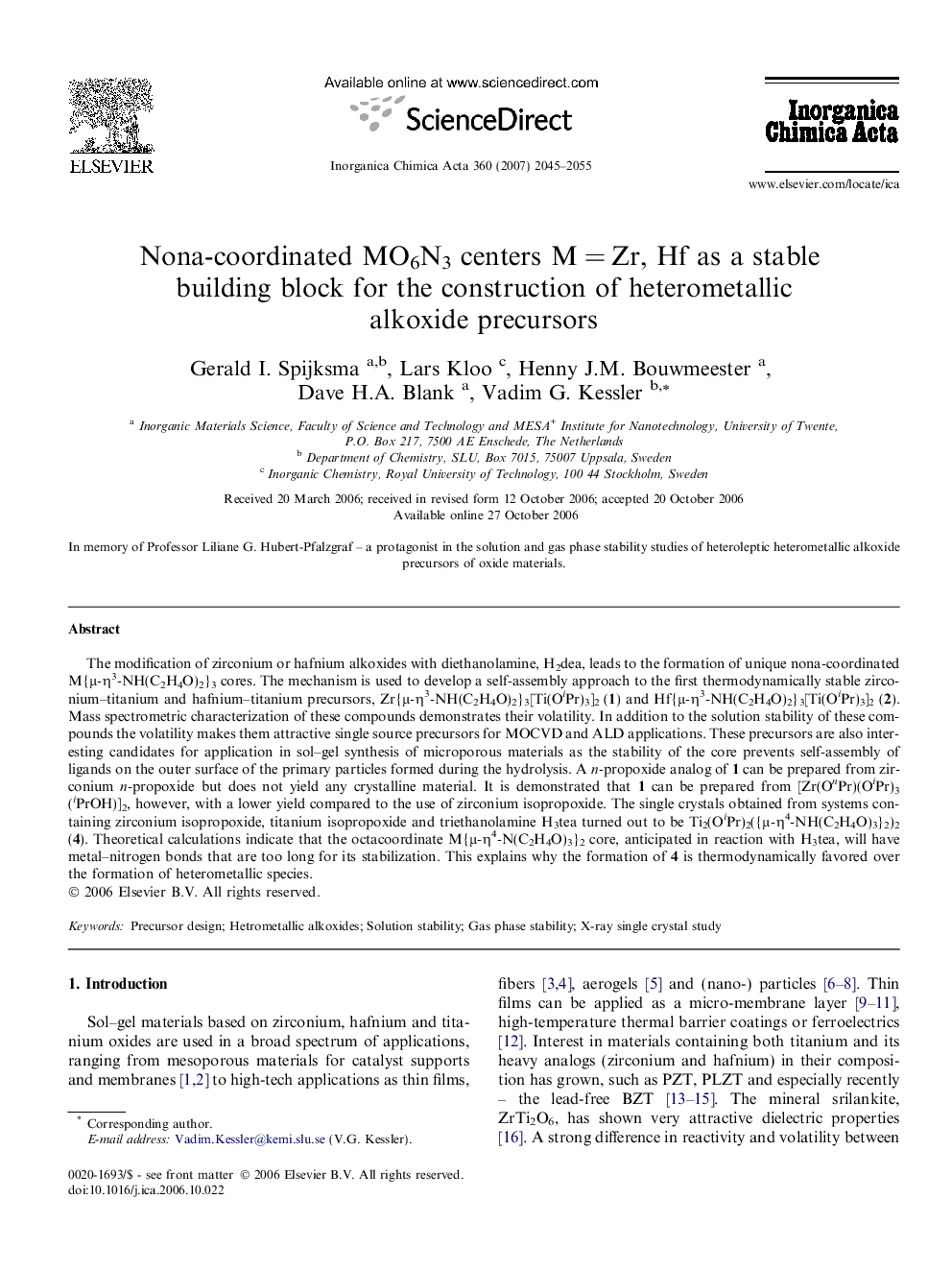| Article ID | Journal | Published Year | Pages | File Type |
|---|---|---|---|---|
| 1310467 | Inorganica Chimica Acta | 2007 | 11 Pages |
The modification of zirconium or hafnium alkoxides with diethanolamine, H2dea, leads to the formation of unique nona-coordinated M{μ-η3-NH(C2H4O)2}3 cores. The mechanism is used to develop a self-assembly approach to the first thermodynamically stable zirconium–titanium and hafnium–titanium precursors, Zr{μ-η3-NH(C2H4O)2}3[Ti(OiPr)3]2 (1) and Hf{μ-η3-NH(C2H4O)2}3[Ti(OiPr)3]2 (2). Mass spectrometric characterization of these compounds demonstrates their volatility. In addition to the solution stability of these compounds the volatility makes them attractive single source precursors for MOCVD and ALD applications. These precursors are also interesting candidates for application in sol–gel synthesis of microporous materials as the stability of the core prevents self-assembly of ligands on the outer surface of the primary particles formed during the hydrolysis. A n-propoxide analog of 1 can be prepared from zirconium n-propoxide but does not yield any crystalline material. It is demonstrated that 1 can be prepared from [Zr(OnPr)(OiPr)3(iPrOH)]2, however, with a lower yield compared to the use of zirconium isopropoxide. The single crystals obtained from systems containing zirconium isopropoxide, titanium isopropoxide and triethanolamine H3tea turned out to be Ti2(OiPr)2({μ-η4-NH(C2H4O)3}2)2 (4). Theoretical calculations indicate that the octacoordinate M{μ-η4-N(C2H4O)3}2 core, anticipated in reaction with H3tea, will have metal–nitrogen bonds that are too long for its stabilization. This explains why the formation of 4 is thermodynamically favored over the formation of heterometallic species.
Graphical abstractNona-coordinated MO6N3 center M = Zr, Hf, formed on the interaction of zirconium or hafnium alkoxides with diethanolamine can be used as a building block in the construction of a new family of heterometallic precursors using a self-assembly approach.Figure optionsDownload full-size imageDownload as PowerPoint slide
